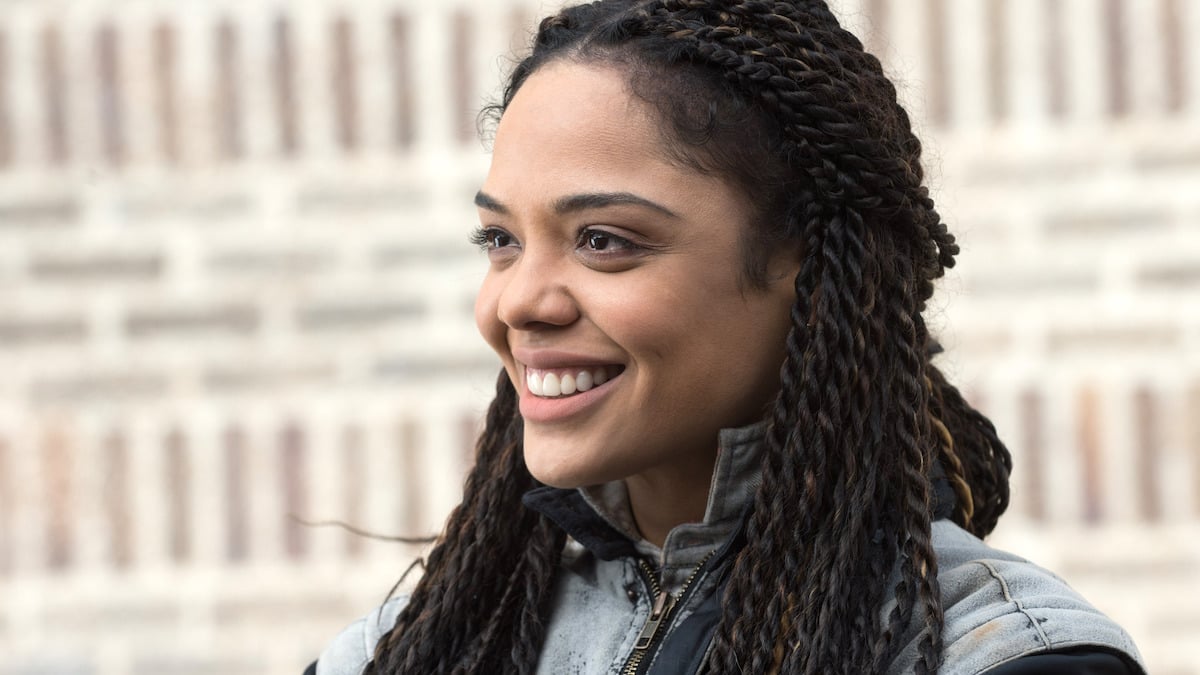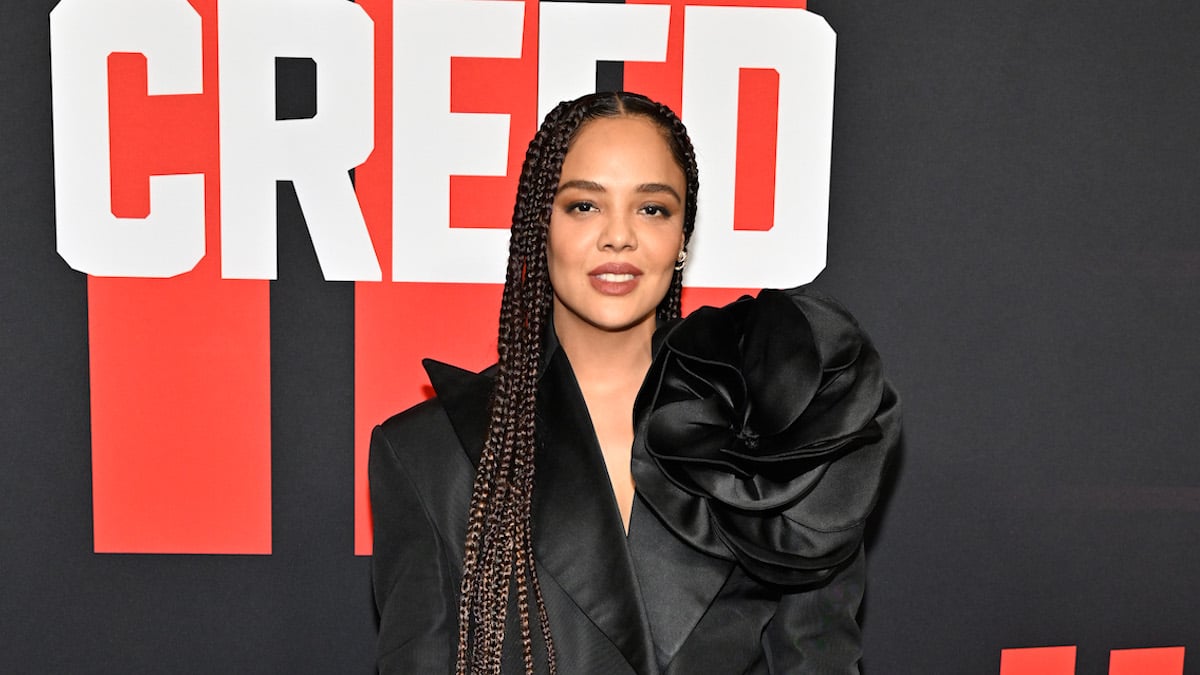Actors playing characters whose lives are completely dissimilar from their own is the very definition of the creative profession. Sometimes, however, Hollywood takes it too far, which is why representation is so vital. Actress Tessa Thompson perfectly represents walking that fine line with reverence and grace.
When we meet Thompson in Ryan Coogler’s first Creed movie, she plays a young woman named Biana Taylor, an aspiring musician experiencing progressive hearing loss. Upon meeting Adonis (Michael B. Jordan), we discover that Bianca wears a hearing aid and is learning sign language in preparation for going completely deaf. Her storyline regarding hearing loss is explored further in the sequels Creed II and Creed III.
By the second movie, Bianca’s hearing loss has deepened. When Adonis gets down on one knee to propose, she misses his speech because her back is turned and she isn’t wearing her hearing aid. Later in the movie, she and Adonis give birth to a baby girl named Amara. Due to Bianca’s history of hearing loss, they have Amara tested and find out she is deaf.
Amara is a young girl by Creed III, and Bianca and Adonis have adjusted to incorporate American Sign Language (ASL) into their daily lives. The actress who played Amara, Mila Davis-Kent, is Deaf herself, and the movie leans into the Deaf experience far more than the previous two. As a result, many viewers wondered whether Thompson is also Deaf, especially since she delivers ASL with far more fluidity and fluency than most actors in Hollywood.
Is Tessa Thompson hard of hearing or Deaf?

No, Tessa Thompson is neither Deaf nor hard of hearing. In fact, Thompson made it a point to ensure her Creed character did not lose her hearing completely because, as she says, “I did not feel comfortable in telling that story. I’m not a member of the Deaf community,” according to Pearl & Dean.
Thompson herself has stated that she is a “proponent of people in their communities being able to tell their own stories.” That’s part of the reason why she advocated for Bianca not to go fully Deaf.
“Hollywood has an inclination sometimes to take stories and be exploitative, but that certainly wasn’t our intention,” she said in an interview with the Los Angeles Times upon releasing the first Creed. “There is a rich history of disabilities being something that we know stirs emotion and feels Oscar-baity. That is not the spirit with which we told this story.”
Thompson has spoken at length about the lack of Deaf representation in Hollywood and the importance of fixing that in interviews such as LIVE with Kelly and Ryan and Good Morning America.
“Our world is so biased toward the hearing world,” she said on LIVE with Kelly and Ryan. “I’m constantly having to unpack that bias. If someone is in front of me on the street and I want to get around them, I say, ‘Excuse me.’ The assumption is always that the person is hearing.”
“It’s a beautiful language,” she said on GMA in discussion of Creed III. “I’m so happy to have gotten the opportunity to learn. I think we really live in a world that is very biased toward the hearing community, and I think that has a lot to do with the fact that there isn’t just enough representation, and so I think to get to see a Deaf character in their humanity, just who they are, I think is hugely, hugely impactful. So I hope this film continues to make people curious about the community and want to learn ASL themselves.”
As a matter of fact, the Creed movies were born of a desire to incorporate the Deaf experience authentically. Ryan Coogler, who directed the first movie, is married to an ASL interpreter, Zinzi Evans. Although Michael B. Jordan went on to direct the third movie, the push for representation didn’t stop there. Creed III is by far the film’s most impactful movie when it comes to exploring the ordinary life of someone who is Deaf.
So, while Tessa Thompson might not be Deaf herself, her reverence for the Deaf community shines through, which is why so many people wondered if she was Deaf. No, she’s just an ally, and hopefully, she’s allowed more allies to join the cause because, according to the National Library of Medicine, over 10 million people in America are hard of hearing or close to, and over one million people are functionally deaf. So, the time to reflect those numbers with proper accommodations and media representation was yesterday.

